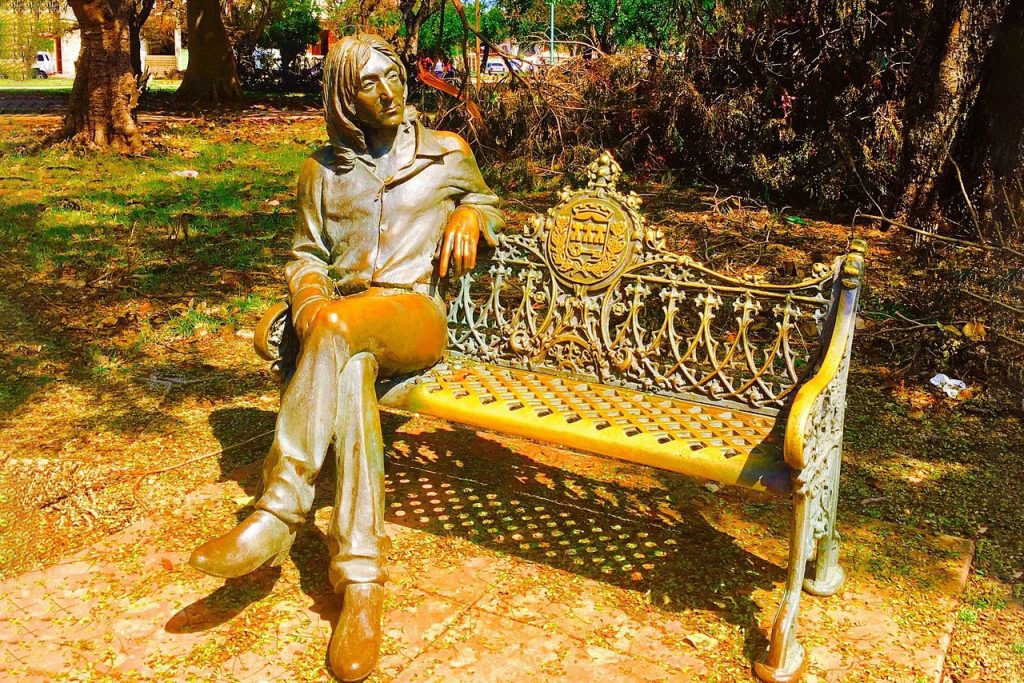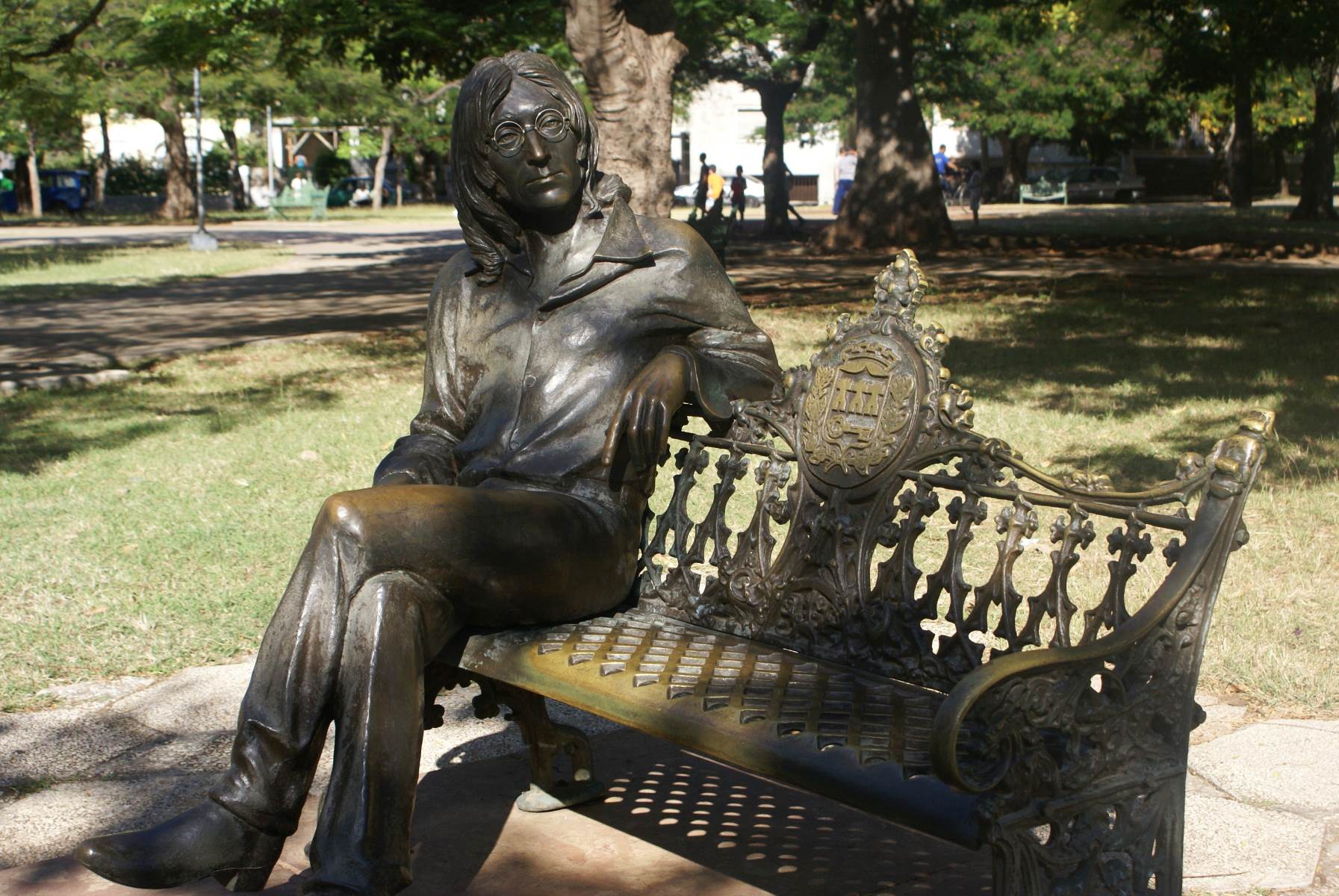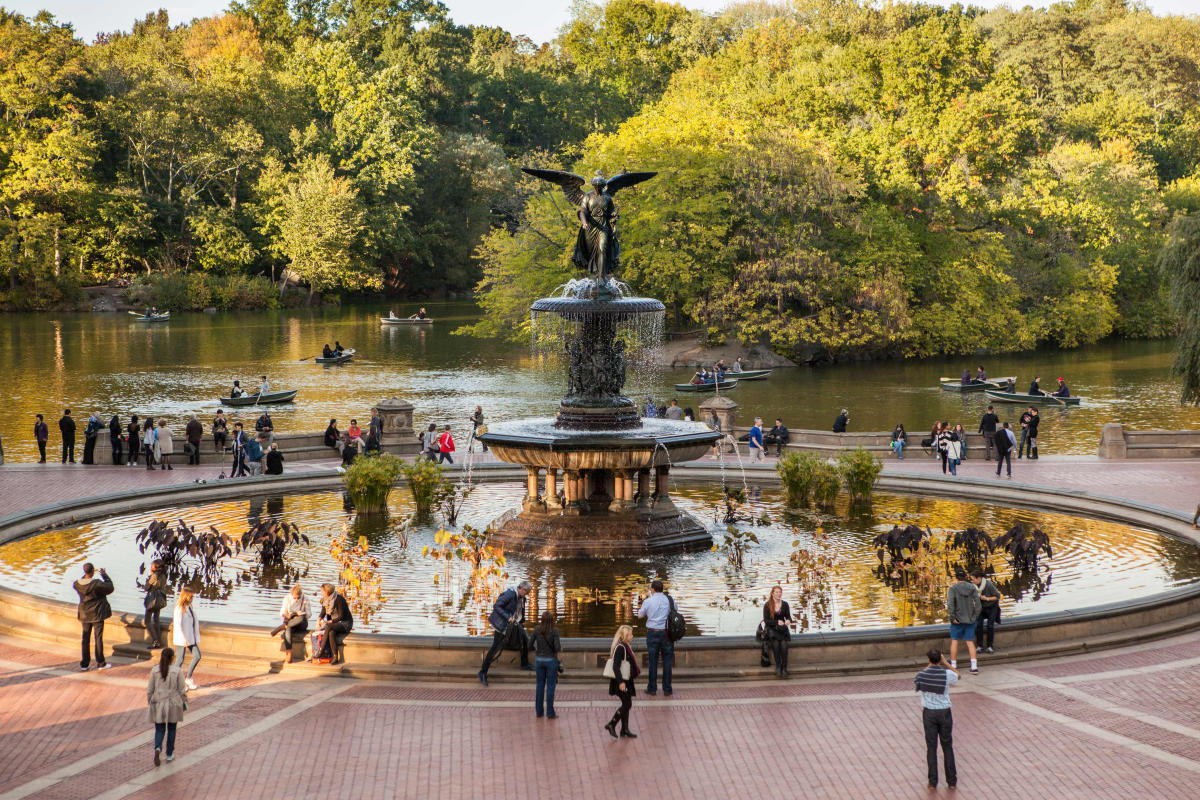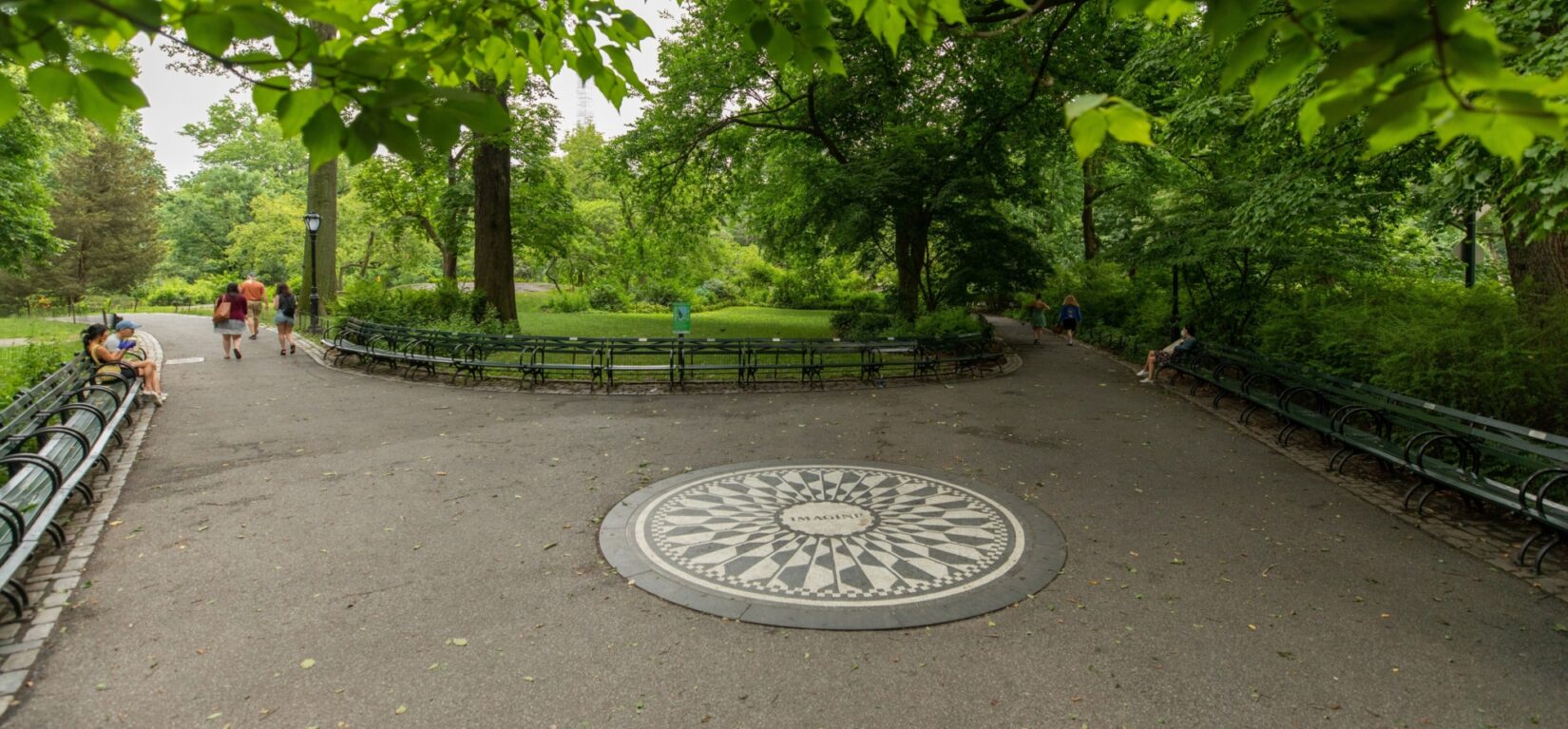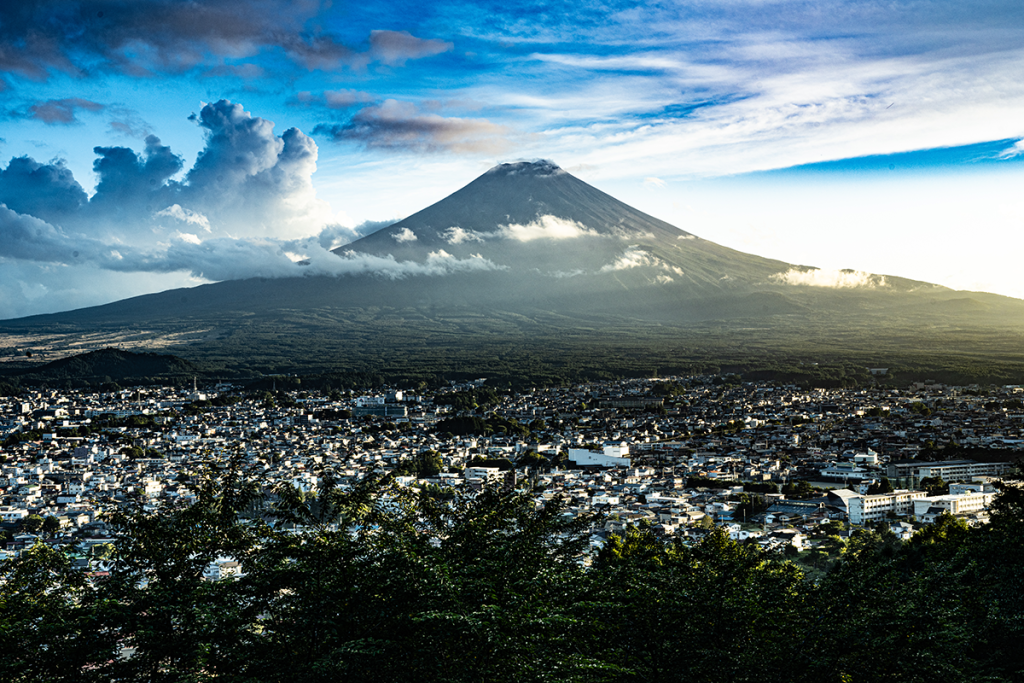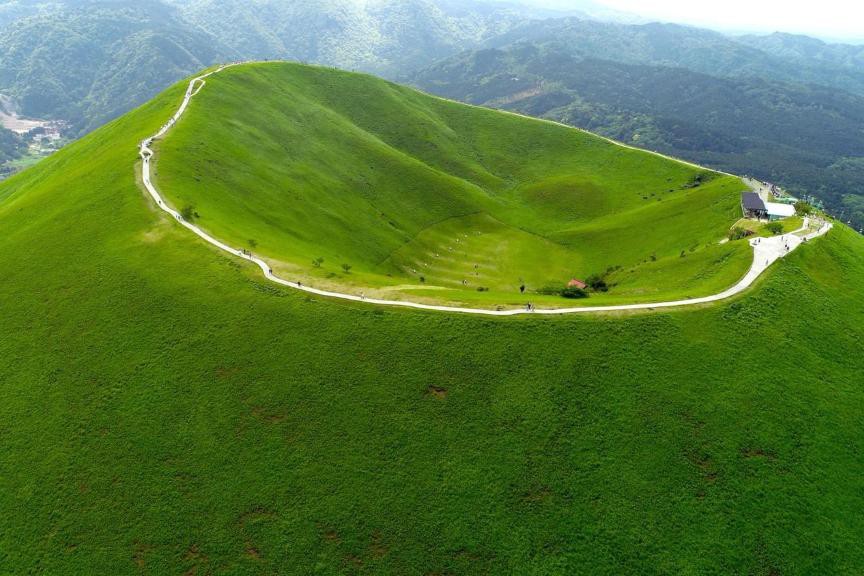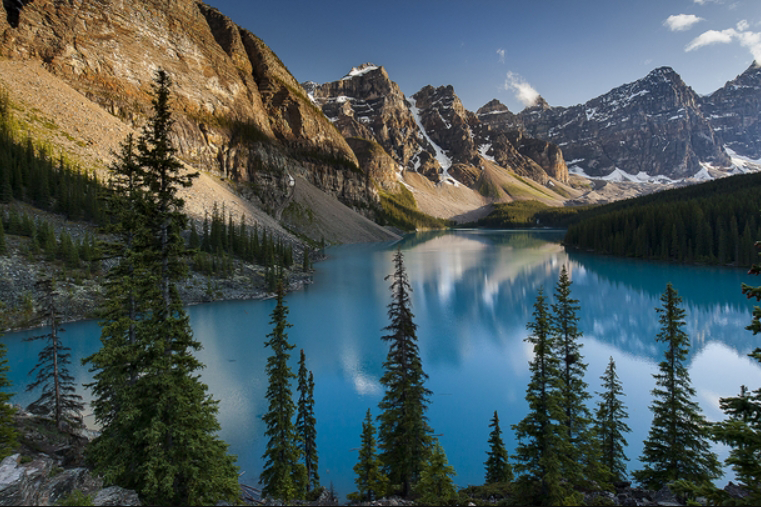John Lennon’s Legacy in Central Park: How His Music Lives On
John lennon new york central park is a testament to the lasting impact of his music. Located in the heart of Manhattan, Central Park is home to the John Lennon Memorial, a tribute to the late musician and songwriter. The memorial was dedicated in 1985, five years after Lennon’s death, and is a popular destination for fans of the Beatles and Lennon’s solo work.
The memorial is a large bronze sculpture of Lennon, seated on a park bench with a guitar in hand. The sculpture was designed by artist and sculptor, Yoko Ono, Lennon’s widow. The sculpture is surrounded by a circular garden of trees and shrubs, and a plaque inscribed with the words “Imagine all the people living life in peace.” This phrase is taken from Lennon’s iconic song, “Imagine,” which is widely considered to be one of the most influential songs of the 20th century.
The memorial is a popular spot for visitors to the park, and it is often filled with people singing and playing Lennon’s songs. On special occasions, such as Lennon’s birthday or the anniversary of his death, the memorial is filled with fans who come to pay tribute to the musician.
The memorial is also a popular spot for musicians to perform. Musicians from all over the world come to Central Park to perform Lennon’s songs, and the memorial has become a place of pilgrimage for many fans.
John Lennon’s legacy in Central Park is a reminder of the power of music and its ability to bring people together. His music continues to inspire and bring joy to millions of people around the world, and his memorial in Central Park is a fitting tribute to his lasting legacy.
Exploring John Lennon’s Central Park: A Look at His Favorite Spots
John Lennon was a beloved musician, songwriter, and peace activist who left an indelible mark on the world. He was also a passionate New Yorker who loved to explore Central Park. This article will explore some of Lennon’s favorite spots in the park, providing an insight into the life of this iconic figure.
One of Lennon’s favorite places in Central Park was the Bethesda Fountain. Located in the center of the park, the fountain was a popular spot for Lennon to relax and take in the beauty of the park. He often visited the fountain to take a break from his hectic life and to enjoy the peaceful atmosphere.
Another spot Lennon frequented was the Sheep Meadow. This 15-acre meadow was a favorite spot for Lennon to take a stroll and enjoy the fresh air. He often brought his guitar and wrote songs while taking in the views of the park.
Lennon also enjoyed visiting the Central Park Zoo. He was particularly fond of the sea lions, which he often watched for hours. He also enjoyed the bird sanctuary, where he could observe a variety of birds in their natural habitat.
Finally, Lennon was a fan of the Central Park Carousel. He often took his son Sean to ride the carousel, and the two of them would spend hours enjoying the sights and sounds of the park.
John Lennon’s love for Central Park was evident in his life and music. His favorite spots in the park provided him with a sense of peace and tranquility, and he often used them as a source of inspiration for his music. Exploring these spots can provide a unique insight into the life of this iconic figure.
The Impact of John Lennon’s Central Park Concerts: How They Changed the Music Scene
John Lennon’s Central Park concerts of 1972 and 1973 were a pivotal moment in the history of music. The concerts, which were held in the heart of New York City, were a major event for the music scene of the time. They were the first large-scale outdoor concerts to be held in the city, and they attracted thousands of people. The concerts were a major success, and they had a lasting impact on the music scene.
The concerts were a major event for the music scene of the time. They were the first large-scale outdoor concerts to be held in the city, and they attracted thousands of people. The concerts featured some of the biggest names in music, including John Lennon, Yoko Ono, and Stevie Wonder. The concerts were a major success, and they had a lasting impact on the music scene.
The concerts helped to popularize the idea of outdoor concerts. Before the concerts, outdoor concerts were not a common occurrence. After the concerts, outdoor concerts became more popular, and they are now a staple of the music scene. The concerts also helped to popularize the idea of large-scale concerts. Before the concerts, large-scale concerts were not a common occurrence. After the concerts, large-scale concerts became more popular, and they are now a regular occurrence.
The concerts also helped to popularize the idea of music festivals. Before the concerts, music festivals were not a common occurrence. After the concerts, music festivals became more popular, and they are now a regular occurrence. The concerts also helped to popularize the idea of free concerts. Before the concerts, free concerts were not a common occurrence. After the concerts, free concerts became more popular, and they are now a regular occurrence.
The concerts also helped to popularize the idea of benefit concerts. Before the concerts, benefit concerts were not a common occurrence. After the concerts, benefit concerts became more popular, and they are now a regular occurrence. The concerts also helped to popularize the idea of charity concerts. Before the concerts, charity concerts were not a common occurrence. After the concerts, charity concerts became more popular, and they are now a regular occurrence.
John Lennon’s Central Park concerts of 1972 and 1973 were a pivotal moment in the history of music. The concerts helped to popularize the idea of outdoor concerts, large-scale concerts, music festivals, free concerts, benefit concerts, and charity concerts. These ideas are now a regular part of the music scene, and they can be traced back to the success of John Lennon’s Central Park concerts.
